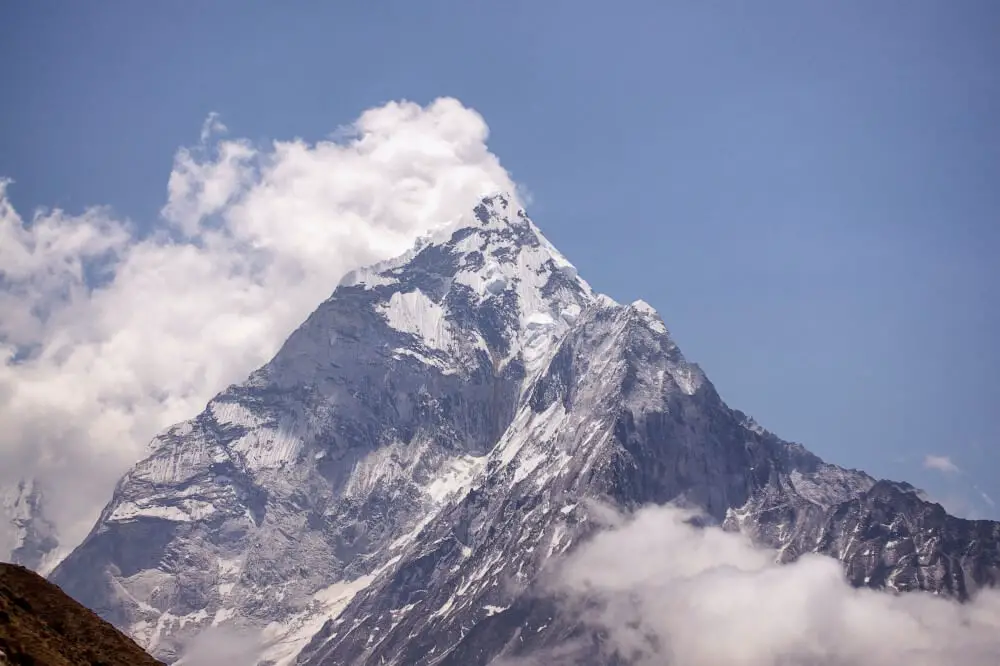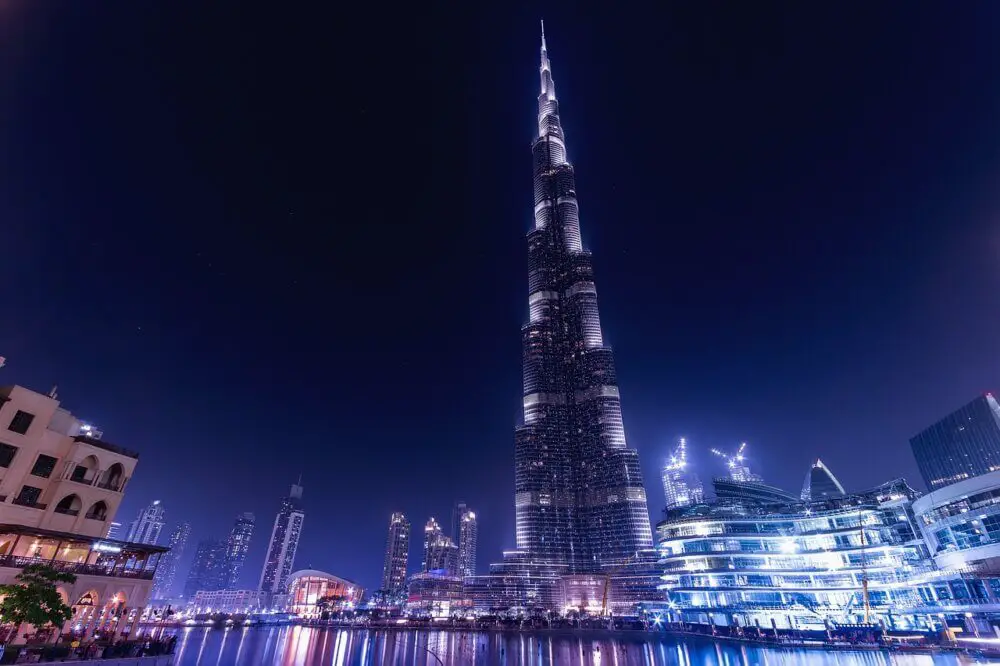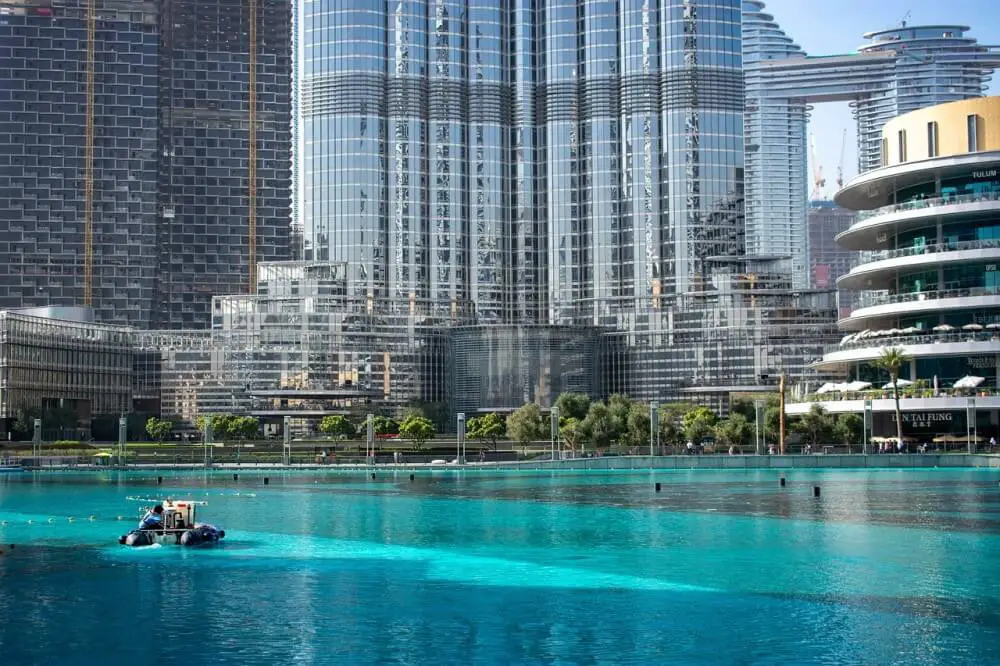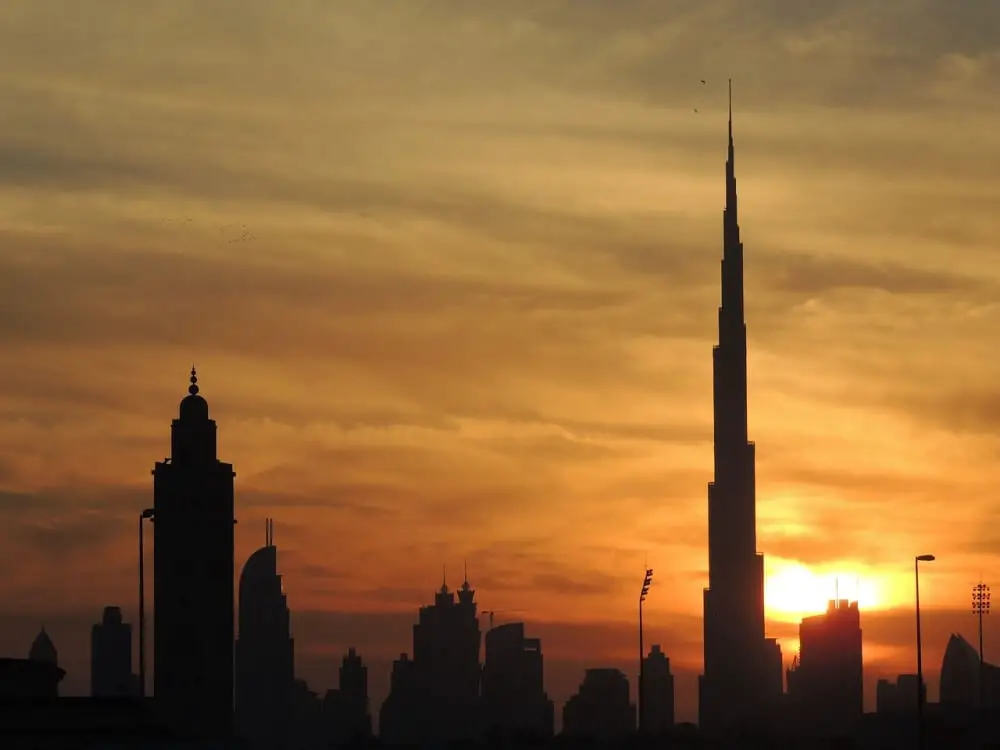As the tallest building and the tallest mountain in the world, the Burj Khalifa and Mount Everest are two truly iconic landmarks. Respectively, they draw in millions of visitors around the world each year, wowing visitors with their astonishing height.
But, although they share these awe inspiring qualities, that’s about where the similarity ends. The Burj Khalifa and Mount Everest are vastly different in many ways, in areas ranging from their height and their histories to their cultural significance.
So, whether you’re a lover of the lofty, planning a bold ascent to each summit, or simply want to know more about two of the most remarkable structures on Earth, this article is for you. Join us as we dissect what makes the Burj Khalifa and Mount Everest so different.
Height
Perhaps the most obvious comparison to make when comparing the Burj Khalifa vs Mount Everest is the difference in height between the two.
While the former is the tallest building in the world at 2,717 feet, it pales in comparison with Mount Everest, which has a staggering peak of 29,029 feet. That makes for a difference of 26,312 feet between the two structures.
However, this shouldn’t take away from the architectural achievement that the Burj Khalifa represents. Building a man-made structure that rises almost 3,000 feet is a truly stunning feat that has never been matched, although it remains to be seen whether it will be beaten in the future.
Usage
The way in which both the Burj Khalifa and Mount Everest are used by humans is another key difference between the two. While the former contains luxury apartments, offices and commercial space galore, Mount Everest is a rugged natural environment that is braved only by the toughest adventure tourists, and those who accompany them.
To make any use of Mount Everest, visitors need special mountaineering equipment and a good deal of experience in climbing. Only those who are willing to test the absolute limits of endurance dare to try and reach its summit.
This certainly isn’t the case for those heading to the Burj Khalifa. The UAE skyscraper is used primarily for leisure and residential purposes, and the most helpful precautions you may need for a trip is a healthy wad of cash if you’re planning on shopping!
History
The Burj Khalifa and Mount Everest have very different histories. While the majestic mountain has been around for millions of years, the Burj Khalifa has only existed in its current form since 2010, following six long years of construction.
In terms of humanity’s history on Mount Everest, the first successful summit climb took place on May 29, 1953, performed by Sir Edmund Hillary and Tenzig Norgay. Since then, thousands of climbers have reached the peak, but it’s still considered a major achievement for anyone who accomplishes it.

Accessibility
Those planning to take a trip to either the Burj Khalifa or Mount Everest will likely already know that there is a vast contrast between the accessibility of both structures. This applies not just to how easy they are to navigate, but how easy they are to get to from the surrounding areas.
The Burj Khalifa, on one hand, is located in the heart of Dubai, one of the world’s connected cities. As a result, it is easily accessible for locals and international visitors alike. Getting around the building itself is easy too, with a range of entrances, a huge parking garage and speedy elevators making it easy to reach the highest floors.
On the other hand, Mount Everest is located in mountainous Nepal – one of the most difficult to reach areas in the world. To even get to the base camp, climbers need to trek for multiple days, and that’s before any of the real adventure starts. That said, Mount Everest has become more popular over recent decades, and it is now more accessible than it has ever been before.
Construction
It should probably come as a surprise to no-one that there is a major difference in the construction and composition of both the Burj Khalifa and Mount Everest. After all, one was built by human hand and one wasn’t.
The construction of the mammoth skyscraper was carefully engineered by a co-ordinated team of architects, civil engineers and construction workers. It is made primarily of concrete and steel, with a range of structural supports including the clever use of buttresses.
Of course, Mount Everest wasn’t so much constructed as it was formed by millions of years of seismological activity. It is made of different layers of rock and ice that include schist, granite and other minerals. Although there is some man-made infrastructure lower on the mountain to help support climbers, it is largely free of human influence.
Climate
Another clear distinction to be made between the Burj Khalifa and Mount Everest is the climate that they respectively lie in.
The Burj Khalifa is situated in the United Arab Emirates, which is a desert country known for its scorching temperatures, with the thermometer often reaching upwards of 50 degrees Celsius in the summer. To combat this, the building employs air cooling and climate control systems to ensure the temperature is always at a comfortable level.
To say Mount Everest presents a contrast to this is somewhat of an understatement. As the highest peak on the planet, weather conditions are some of the most volatile to be found anywhere, with temperatures sometimes plunging as low as -60 degrees Celsius.

Environmental Impact
As all megastructures made and built for humans tend to, the ongoing operations of the Burj Khalifa has a big environmental impact. To keep the building and its occupants running, high-energy air cooling systems and large amounts of resources are expended every day.
The same, naturally, cannot be said for Mount Everest, which is not utilised in the same way by humanity. But, that’s not to say our presence has not been felt on the mountain. Its enduring popularity, and consequently the thousands of climbers that have ascended its slopes,have presented certain environmental issues.
Most prominently, this includes the ongoing accumulation of waste which has been left by climbers. This has caused almost 12 tonnes of trash to be left in the surroundings of Base Camp each year, with efforts underway to try and reduce this figure.
Tourism
Tourism is another key difference between the Burj Khalifa and Mount Everest. Both landmarks attract thousands of visitors a year, but the number and type of people visiting each one varies significantly.
For one, Burj Khalifa is considered the most popular visitor attraction in Dubai, with over 180,000 visitors a month. Whether the Burj is the sole reason why people visit the city is not clear, but the building certainly helps it to attract holidaymakers and other tourists. It also bolsters Dubai’s reputation as a modernised, thriving city in which to do business.
Mount Everest, meanwhile, does not attract anywhere near the same level of visitation from tourists – only hundreds make the trip each year. However, this is hardly surprising: the mountain is not only difficult to get to, it is also very expensive to travel to from most areas of the world.
Cultural Significance
Although there is a vast disparity in the amount of time that the Burj Khalifa and Mount Everest have been around, both have developed a prominent cultural significance. This extends well beyond their immediate environs, and has led them to be the symbolic structures they are.
For instance, the Burj Khalifa, being the grandiose structure that it is, represents all that is powerful and opulent in the modern world. In this way, it has become symbolic of the economic rise of Dubai and the wider Middle East region on the world stage.
There is a very different sense of cultural significance for Mount Everest. The mountain has been a sacred source of inspiration and worship for centuries in the Himalayan region, and local communities still conduct ceremonies and ritual rites on its slopes.
This is not to mention its hallowed status among climbers and mountaineers as one of the toughest ascents of them all. To reach the summit of Mount Everest is widely considered to be one of the hardest tasks anyone can complete, and as such it has become emblematic of human perseverance.

Safety
Lastly on our list of the main differences between the Burj Khalifa and Mount Everest is safety. Put simply, the former is a safe environment in which to live, work and play, while the latter is the opposite by any measure.
In fact, Mount Everest is one of the dangerous environments on Earth for humans to be in. From freezing temperatures, to avalanches, to dizzyingly high altitudes, there are a whole host of potentially lethal hazards for anyone who dares to climb it. Sadly, out of the many climbers who have unsuccessfully attempted it, some have paid with their lives.
Conversely, the Burj Khalifa is one of the most secure buildings in the world, with numerous layers of security for residents and visitors alike. From a coordinated network of CCTV cameras to air-conditioned refuge rooms, every eventuality has been accounted for.
It is also highly secure from a structural sense, with state-of-the-art seismic engineering and a 3.7-metres-thick concrete foundation.
How many Burj Khalifa’s are needed to reach the height of Mount Everest?
Now for a bonus question: if you stacked Burj Khalifa’s on top of each other, how many would be needed to reach the full height of Mount Everest’s 29,029 feet?
The answer is approximately 11! This is because the Burj Khalifa’s height is around 2,717 feet, which is around eleven times shorter than Mount Everest.
We hope you have enjoyed our handy comparative guide to Burj Khalifa vs Mount Everest. While comparing a building to a mountain is never a fair comparison, there’s no doubt that both structures are some of Earth’s great marvels.
Now you’ve learnt some more about the tallest building in the world, why not learn what keeps it from falling over? Or, why it’s even called a building in the first place.
Or, if you’d like more definitions on building and architecture vocabulary, take a look at our range of building wikis.
Last Updated on 12 April 2023 by Michael

